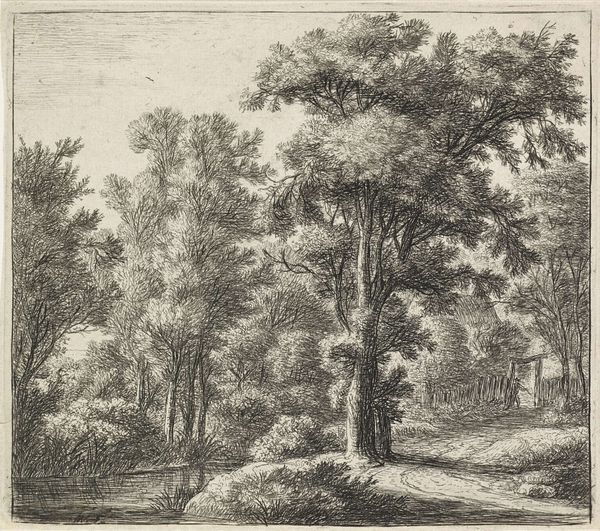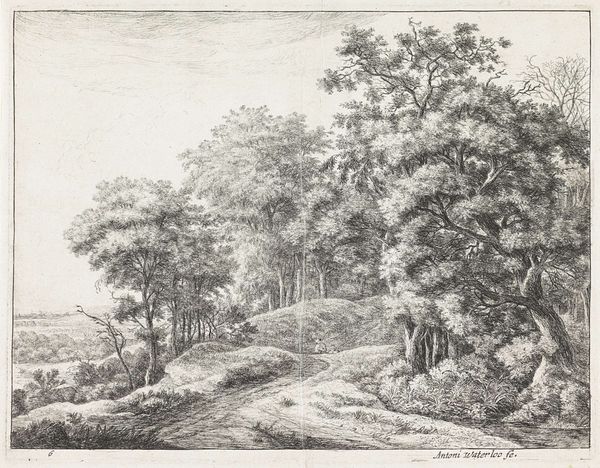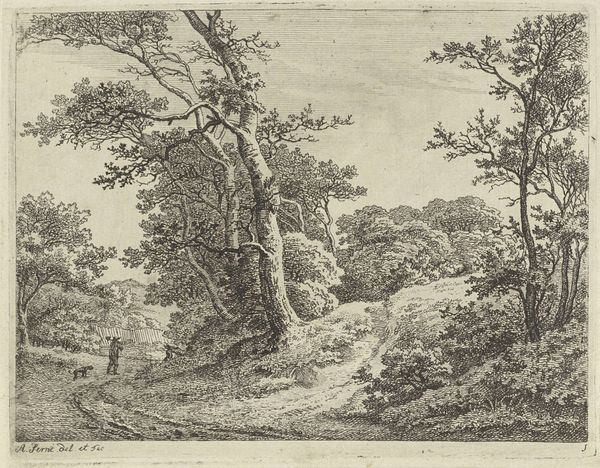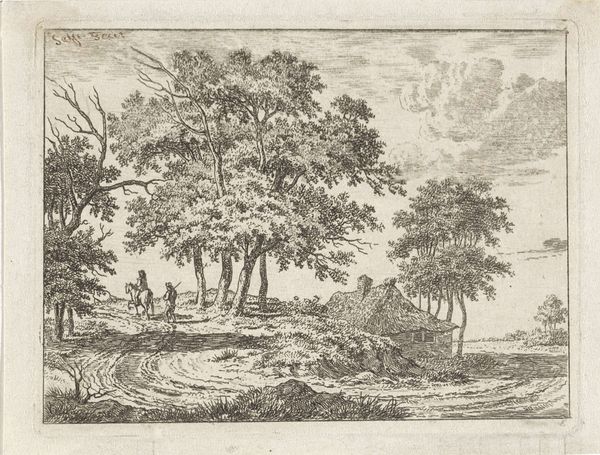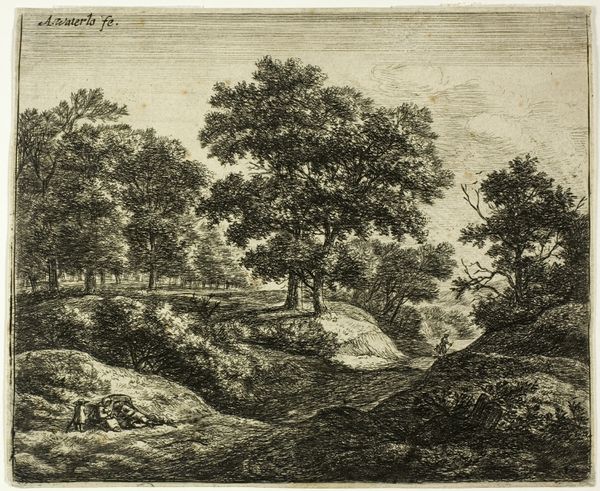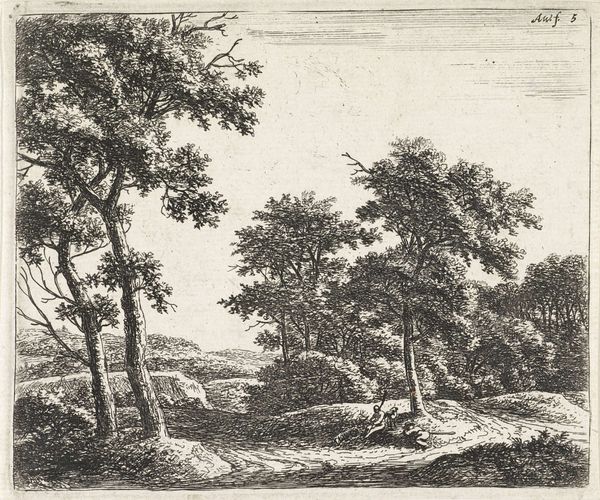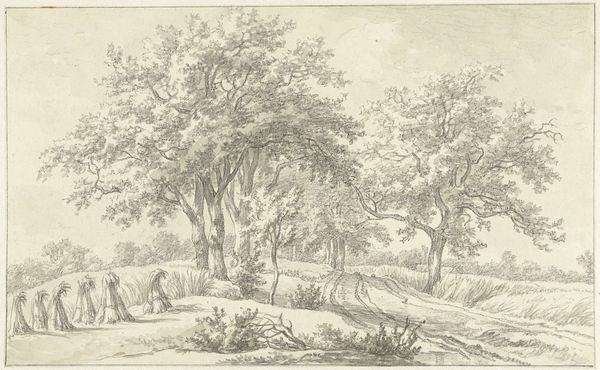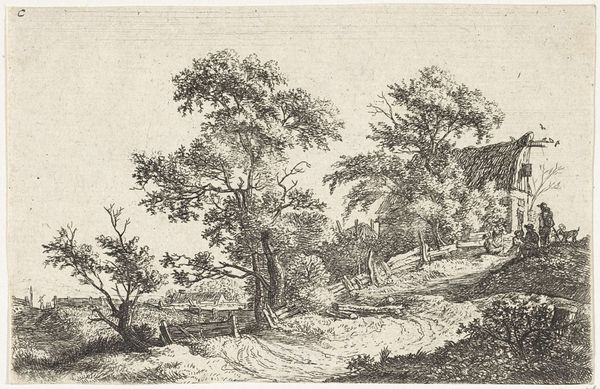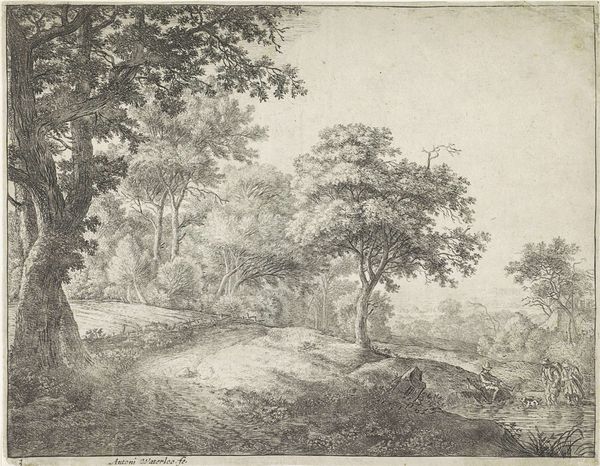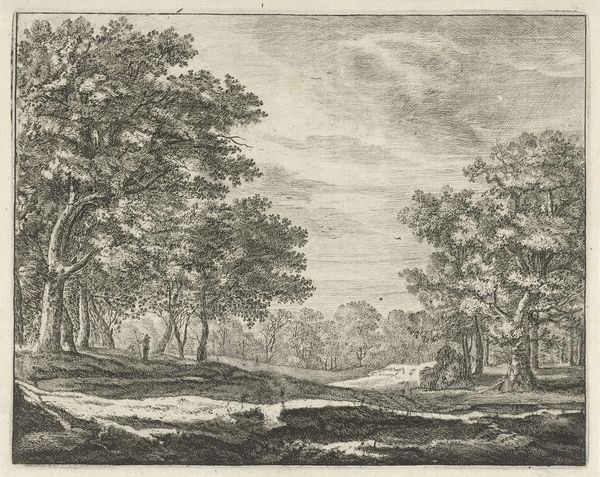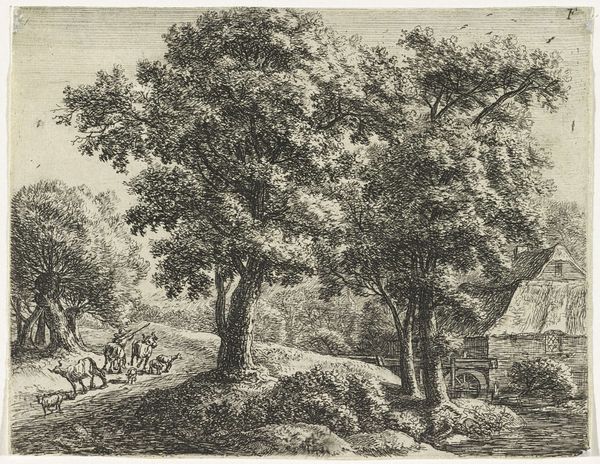
etching
#
dutch-golden-age
#
etching
#
landscape
#
forest
Dimensions: height 236 mm, width 296 mm
Copyright: Rijks Museum: Open Domain
Editor: We are looking at "Slapende Herder" by Anthonie Waterloo. It’s an etching from the Dutch Golden Age, somewhere between 1630 and 1765. I’m struck by the tonal range achieved just with line work; it really captures a peaceful, quiet forest. How would you interpret this landscape based on its formal qualities? Curator: Observe how the artist employs variations in line density and weight to create contrast. Notice the progression from detailed foreground elements to the sparser, softer rendering of the background. Waterloo guides the viewer’s eye not through narrative, but through considered placement of light and shadow. What does this strategic contrast suggest? Editor: Perhaps a structured and deliberate viewing experience, guiding us through the depth of the image, using darker lines up close that become more vague further into the picture. Curator: Precisely. The composition relies on calculated arrangements; the lines become textures. How do the recurring, curved shapes—evident in the foliage, branches, and even the landscape contours—affect your perception of the overall structure? Editor: The repetition creates a rhythm. It pulls everything together so that no single element really overpowers the whole scene. It feels very balanced in spite of it seeming really natural. Curator: Indeed. Waterloo constructs not just a landscape but a self-contained visual system, in which each mark contributes to the stability and harmony of the whole. A work best appreciated by recognizing this underlying unity. Editor: So it's a highly constructed version of "natural," but that gives it its strength and visual appeal. Thanks. Curator: It reveals a conscious artist using composition and marks to direct, focusing the work on its intrinsic elements rather than outward narrative.
Comments
No comments
Be the first to comment and join the conversation on the ultimate creative platform.
